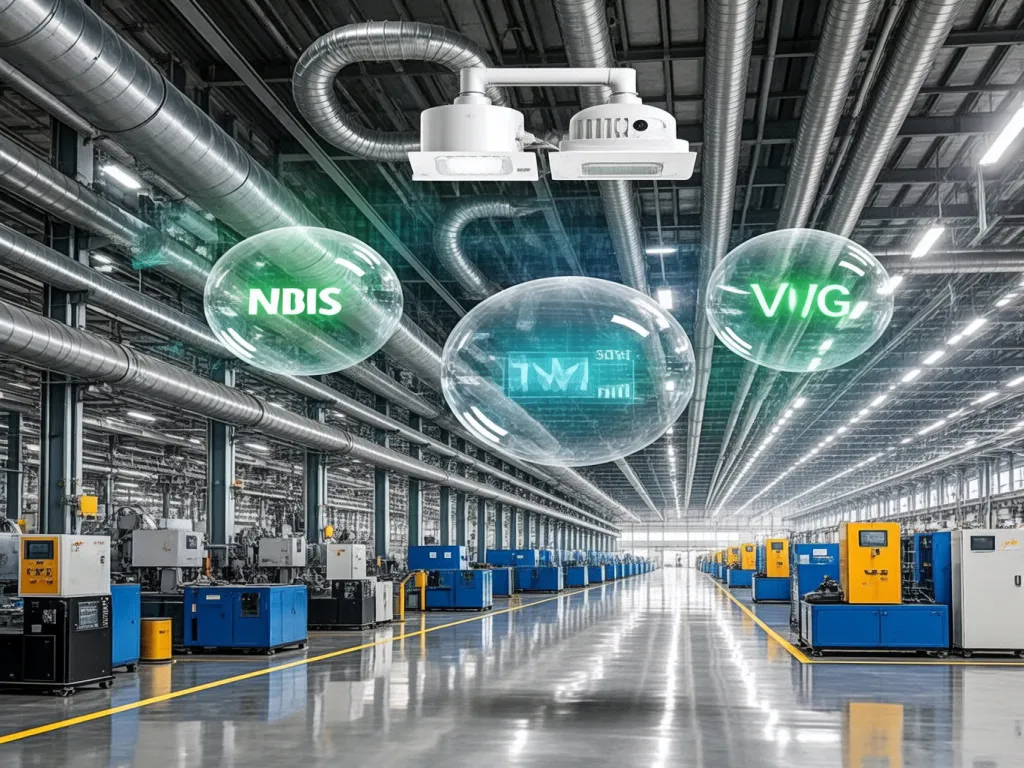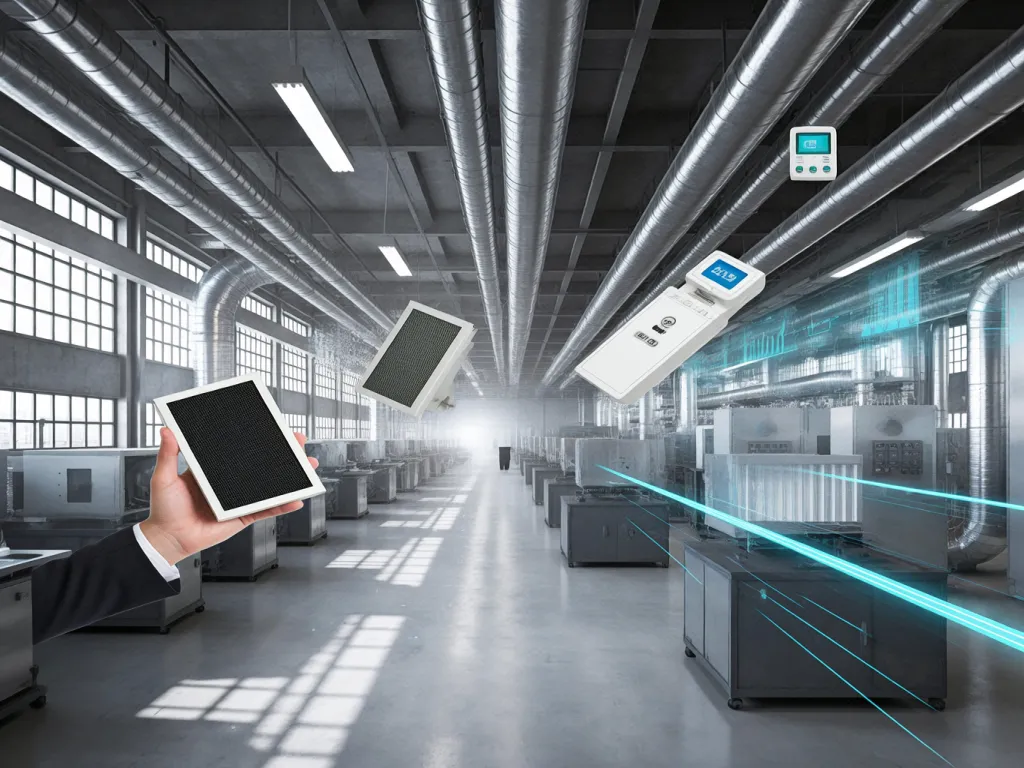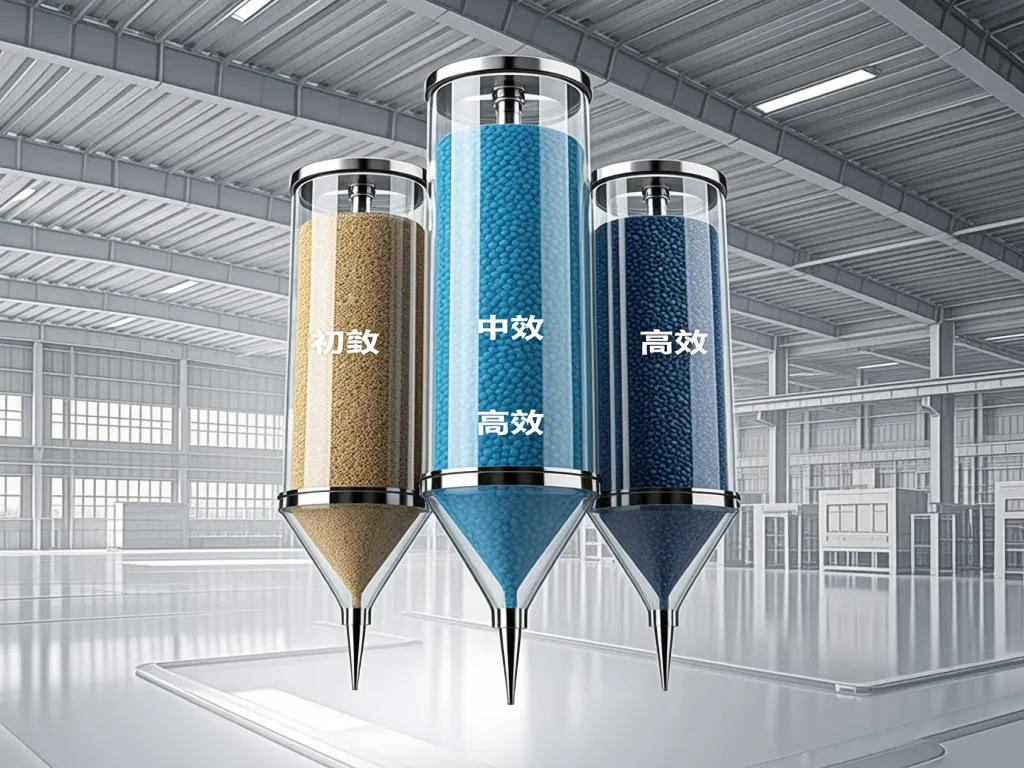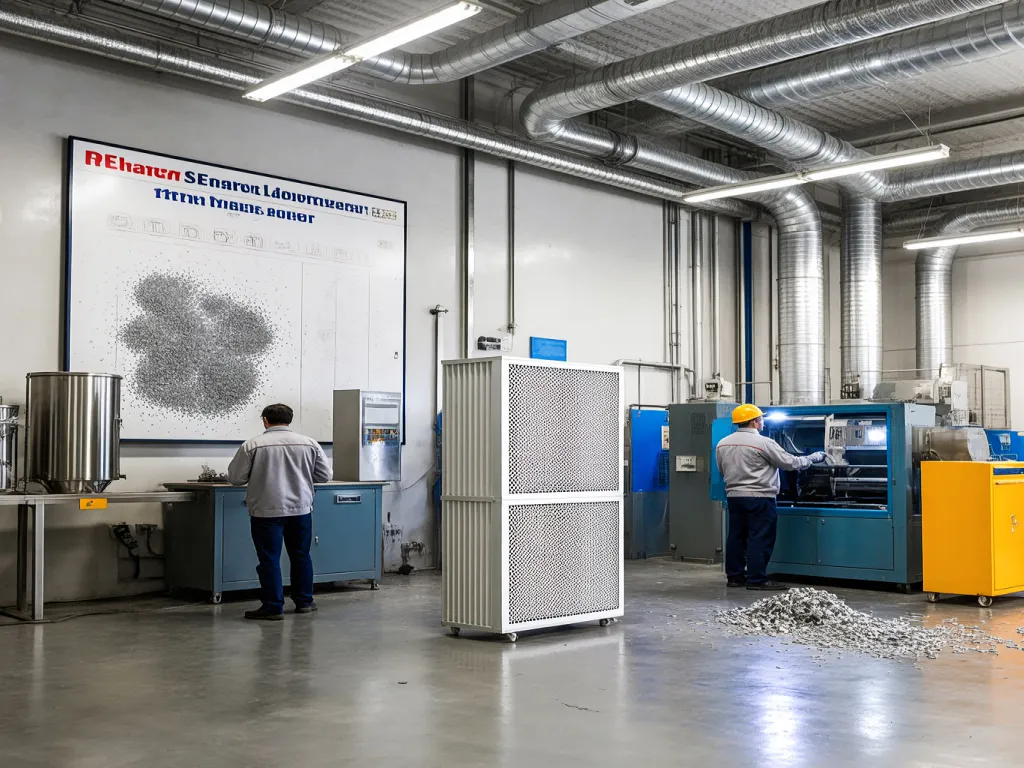Industrial Air Filter Guide: Boost Efficiency Now
In industrial environments, the right air filter can make or break your operational efficiency. Whether you’re battling dust, fumes, or particulates, choosing the wrong filter wastes energy and risks equipment damage. But how do you cut through the noise and find the perfect air filter for your needs? This guide dives deep into industrial air filter selection, revealing how to match filter types to your unique environment—and why it matters more than you think.

Understanding Industrial Environments: Pollution Types, Concentrations, and Distributions for Air Filter Selection
When it comes to selecting the right Air Filter for your industrial environment, understanding the specifics of your workspace is crucial. Industrial settings are not one-size-fits-all; they vary greatly in terms of the types of pollutants generated, their concentrations, and how they’re distributed throughout the space. This knowledge forms the bedrock of effective Air Filter selection, ensuring you’re not just throwing money at a problem but actually solving it. Let’s dive into the nitty-gritty of industrial pollution to equip you with the data you need for informed decision-making.
First off, let’s talk about the common culprits in industrial air pollution. You’ve got particulate matter (PM), which includes everything from dust and dirt to more harmful substances like asbestos fibers and metal shavings. These tiny particles can wreak havoc on both human health and machinery if not properly filtered out. Then there are gaseous pollutants – think volatile organic compounds (VOCs) from paints and solvents, carbon monoxide from combustion processes, and sulfur dioxide from certain industrial reactions. Each of these gases requires a different approach to filtration, making it essential to identify which ones are prevalent in your environment.
Now, onto concentrations. The amount of pollutants in the air can vary dramatically depending on the industry, the specific processes being carried out, and even the time of day. For instance, a metal fabrication shop might see higher concentrations of metal dust during cutting and grinding operations, while a chemical plant could experience spikes in VOC levels during certain production cycles. Understanding these fluctuations is key because it influences not just the type of Air Filter you need but also its capacity and how often it needs to be replaced or cleaned.
Distribution is another critical factor. Pollution doesn’t spread evenly throughout an industrial space. It tends to accumulate in certain areas based on airflow patterns, the layout of machinery, and ventilation systems. For example, near intake vents, you might find lower concentrations as fresh air dilutes pollutants, whereas in corners or enclosed spaces, levels could be significantly higher. Mapping out these ‘hotspots’ can guide you in placing Air Filters strategically for maximum efficiency.

So, how do you gather all this data? Start with a thorough site assessment. Walk through your facility, noting any visible signs of pollution like dust buildup or unusual odors. Engage with your team – they’re on the ground every day and can provide valuable insights into when and where pollution seems worst. Consider investing in air quality monitoring equipment; these devices can give you real-time data on pollutant levels, helping you track trends over time.
Remember, the goal here isn’t just to find an Air Filter that can handle the worst-case scenario but to select one that’s optimally suited to your average conditions, with a bit of headroom for those occasional spikes. Over-specifying can lead to unnecessary costs, while under-specifying means you’re not protecting your workers or equipment adequately. It’s a delicate balance, but armed with the right data, you can strike it perfectly.
In the next sections, we’ll explore how different types of Air Filters tackle these pollutants and what efficiency levels you can expect. But for now, take a moment to appreciate the complexity of your industrial environment. It’s not just a ‘dirty’ space; it’s a dynamic ecosystem of airflows and contaminants, each demanding its own solution. By understanding this ecosystem, you’re already halfway to selecting the perfect Air Filter for your needs.
Particulate Matter: The Silent Saboteur
Particulate matter, often abbreviated as PM, is a broad category encompassing any solid or liquid particles suspended in the air. These can range from visible dust and dirt to microscopic particles that can penetrate deep into the lungs. In industrial settings, PM sources are diverse, including raw material handling, machining operations, and even the wear and tear of machinery. The size of these particles matters greatly; PM10 (particles with a diameter of 10 micrometers or less) can irritate the eyes and respiratory system, while PM2.5 (particles with a diameter of 2.5 micrometers or less) can enter the bloodstream, posing serious health risks. Identifying the size and composition of PM in your environment is the first step in selecting an Air Filter capable of capturing these harmful particles.
Gaseous Pollutants: The Invisible Threat
Unlike particulate matter, gaseous pollutants are invisible to the naked eye but no less dangerous. VOCs, for instance, are emitted from a wide range of industrial processes, including painting, solvent use, and even some manufacturing processes. These compounds can cause a variety of health issues, from headaches and nausea to more severe respiratory problems and even cancer over long-term exposure. Carbon monoxide, another common gaseous pollutant, is produced during incomplete combustion and can be lethal in high concentrations. Sulfur dioxide, often associated with fossil fuel combustion, can irritate the respiratory system and aggravate conditions like asthma. Each of these gases requires a specific type of filtration, often involving activated carbon or other specialized media, highlighting the importance of accurate pollutant identification.
Concentration Fluctuations: Timing is Everything
The concentration of pollutants in your industrial environment isn’t static; it changes based on production cycles, maintenance activities, and even external factors like weather. For example, during peak production hours, you might see a significant increase in particulate matter as machines operate at full capacity. Similarly, certain maintenance tasks, like sandblasting or painting, can lead to temporary spikes in VOC levels. Understanding these fluctuations is crucial because it affects not just the type of Air Filter you need but also its operational parameters, such as flow rate and filter media life. Continuous monitoring can help you anticipate these changes and adjust your filtration strategy accordingly.
Distribution Patterns: Mapping Your Air Quality
Pollution doesn’t distribute evenly across an industrial space. Airflow patterns, caused by ventilation systems, machinery layout, and even the building’s architecture, play a significant role in how pollutants spread. Near intake vents, where fresh air is drawn in, you might find lower pollutant levels as the incoming air dilutes contaminants. Conversely, in enclosed spaces or areas with poor ventilation, pollutants can accumulate to dangerous levels. By mapping out these ‘hotspots,’ you can strategically place Air Filters where they’re most needed, optimizing their effectiveness and potentially reducing the number of filters required overall. This not only improves air quality but can also lead to cost savings in the long run.

Air Filter Types and Their Efficiency: A Detailed Analysis
When it comes to industrial environments, choosing the right air filter isn’t just about keeping the air clean—it’s about optimizing efficiency, reducing downtime, and ensuring compliance with health and safety standards. But with so many options out there, how do you know which air filter is right for your specific needs? Let’s break down the different types of air filters—primary (初效, often referred to as ‘coarse’ or ‘pre-filters’), medium-efficiency , and high-efficiency —and explore their filtering principles and efficiency differences. This way, you’ll be equipped to make an informed decision.
First up, primary air filters. These are your first line of defense against larger particulate matter like dust, lint, and insects. They work by trapping these larger particles on the surface of the filter media, preventing them from entering deeper into your HVAC system or industrial process. The efficiency of primary filters is typically measured in terms of percentage capture of particles above a certain size, often around 5-10 microns. While they’re not designed to catch the smallest particles, they’re crucial for protecting more sensitive downstream filters and equipment from clogging and damage. Think of them as the bouncers at the club door, keeping out the riff-raff so the VIPs (your more expensive filters) can do their job undisturbed.
Moving on to medium-efficiency air filters. These are where things start to get a bit more sophisticated. Medium-efficiency filters are designed to capture smaller particles than primary filters, typically in the range of 1-5 microns. They use a combination of mechanical and sometimes electrostatic means to trap particles. The filter media in these filters is often pleated to increase surface area, which in turn increases the amount of particulate matter they can capture without significantly restricting airflow. This makes them a great choice for environments where you need to balance air quality with system efficiency. They’re like the middle managers of the filter world—not as rough around the edges as the bouncers, but still able to handle a good amount of the workload.
Finally, we have high-efficiency air filters. These are the heavy hitters, designed to capture even the smallest particles, often down to 0.3 microns or less. High-efficiency filters, such as HEPA (High-Efficiency Particulate Air) filters, use a dense network of fibers to trap particles through a combination of diffusion, interception, and impaction. For a deeper understanding of HEPA filters, you may refer to this informative article: HEPA Filter Basics. The result is incredibly clean air, making them ideal for environments where air quality is critical, such as cleanrooms, hospitals, and certain manufacturing processes. However, this high level of filtration comes at a cost—reduced airflow and higher pressure drop, which means your HVAC system has to work harder. It’s like hiring a team of security experts for your event—they’ll keep everything running smoothly, but you’ll need to make sure your infrastructure can handle the extra load.
So, how do you choose the right air filter for your industrial environment? It all comes down to understanding your specific needs. Are you dealing with large amounts of coarse dust, or are you trying to eliminate microscopic contaminants? Do you need to balance air quality with energy efficiency, or is air purity your top priority? By considering these factors, you can select an air filter that not only meets your requirements but also optimizes your overall system performance.
Remember, the right air filter can make all the difference in your industrial environment. It’s not just about keeping the air clean—it’s about ensuring your operations run smoothly, efficiently, and safely. So, take the time to understand the different types of air filters and their capabilities. Your industrial environment (and your bottom line) will thank you for it.
Primary Air Filters: The First Line of Defense
Primary air filters, also known as coarse or pre-filters, are essential for any industrial environment. They capture larger particles like dust, lint, and insects, preventing them from entering your HVAC system or industrial process. Their efficiency is typically measured by the percentage of particles above a certain size (often 5-10 microns) that they can capture. While they may not catch the smallest particles, they play a crucial role in protecting more sensitive downstream filters and equipment from clogging and damage. Think of them as the initial barrier that keeps out the bulk of contaminants, ensuring your system runs smoothly.
Medium-Efficiency Air Filters: Balancing Act
Medium-efficiency air filters step up the game by capturing smaller particles, typically in the 1-5 micron range. They use a combination of mechanical and sometimes electrostatic means to trap particles. The pleated design of these filters increases surface area, allowing them to capture more particulate matter without significantly restricting airflow. This makes them ideal for environments where you need to balance air quality with system efficiency. They’re the middle ground, providing a good level of filtration without putting too much strain on your HVAC system.
High-Efficiency Air Filters: The Pinnacle of Purity
High-efficiency air filters, such as HEPA filters, are the gold standard when it comes to air purification. They’re designed to capture even the smallest particles, often down to 0.3 microns or less. Using a dense network of fibers, these filters trap particles through diffusion, interception, and impaction. For more insights on HEPA filter efficiency ratings, check out this comprehensive guide: Understanding MERV Ratings. The result is incredibly clean air, making them perfect for environments where air quality is paramount, like cleanrooms and hospitals. However, this high level of filtration comes with a trade-off—reduced airflow and higher pressure drop, meaning your HVAC system has to work harder. It’s a sacrifice worth making if air purity is your top priority.

Selection Strategy and Case Analysis: Industrial Air Filter Selection in Action
Choosing the right air filter for your industrial environment isn’t just about picking the first option that comes up in a search. It’s a strategic decision that requires a deep understanding of your specific needs, the nature of pollutants in your workspace, and the performance characteristics of different filter types. Let’s dive into a step-by-step selection strategy, complete with real-world examples and practical tips.
Step 1: Assess Your Industrial Environment
Before you even start looking at air filters, take a close look at your industrial setting. What kind of pollutants are you dealing with? Are they particulate matter like dust and metal shavings, or gaseous pollutants such as volatile organic compounds (VOCs)? The concentration and size distribution of these contaminants will significantly influence your filter choice. For instance, a woodworking shop generating large amounts of sawdust will need a different approach than a chemical plant dealing with fine particulates and fumes.
Step 2: Understand Filter Types and Their Efficiency
Now that you have a clear picture of your pollutants, it’s time to match them with the right filter type. As we discussed earlier, filters range from coarse (pre-filters) to fine (HEPA). But don’t just stop at the basic categories. Dive deeper into the specifics: What’s the MERV rating of the filter you’re considering? Does it have activated carbon for gas phase filtration? Understanding these details will help you make an informed choice.
Step 3: Consider Operational Factors
Beyond pollutant type and filter efficiency, there are several operational factors to consider. Think about the airflow rate required for your space. A filter that’s too restrictive can strain your HVAC system, leading to higher energy costs. Also, consider the maintenance requirements. Some filters need frequent replacement, while others can be cleaned and reused. Factor in the cost of replacement filters over the filter’s lifespan to get a true picture of its total cost of ownership.
Step 4: Evaluate Real-World Performance
Don’t just rely on manufacturer specs. Look for real-world performance data. Case studies and customer reviews can provide invaluable insights into how a filter performs in situations similar to yours. For example, if you’re a food processing plant, seek out case studies from other food manufacturers who have successfully implemented air filtration systems. You can explore a variety of case studies here.
Success Story: Transforming a Metal Fabrication Shop
Let’s take a look at a real-life example. A metal fabrication shop was struggling with high levels of airborne metal particles, leading to poor indoor air quality and frequent equipment breakdowns. After assessing their environment, they realized they needed a filter capable of capturing fine metallic dust. They opted for a high-efficiency particulate air (HEPA) filter with a MERV rating of 16, combined with a pre-filter to extend its lifespan. The result? A dramatic improvement in air quality, reduced equipment maintenance costs, and a healthier work environment for employees.
Key Takeaways and Practical Tips
- Don’t Overlook Pre-Filtration: Using a pre-filter can significantly extend the life of your main filter, reducing costs in the long run.
- Consider the Total Cost of Ownership: Initial purchase price is just one part of the equation. Factor in maintenance, replacement, and energy costs.
- Seek Expert Advice: If you’re unsure, consult with air filtration specialists. They can provide tailored recommendations based on your specific needs.
- Monitor and Adjust: Even after installation, keep an eye on filter performance. Adjust your strategy as needed based on real-world data.
Success Story Deep Dive: The Metal Fabrication Shop
The metal fabrication shop’s journey to cleaner air wasn’t without its challenges. Initially, they tried cheaper, lower-efficiency filters, but these quickly became clogged, leading to frequent replacements and subpar air quality. It was only after switching to a HEPA filter with a high MERV rating that they saw a significant improvement. The key lesson here? Investing in quality pays off, both in terms of air quality and long-term savings.
Selecting the right air filter isn’t just about compliance—it’s a strategic move to boost efficiency, cut costs, and protect your team. From understanding pollutant types to decoding filter efficiency ratings, this guide arms you with actionable steps to make informed decisions. Ready to transform your industrial air quality? Start by revisiting your current setup—could a smarter filter choice unlock hidden gains? Share your thoughts or dive deeper into our industrial air filter resources to keep refining your approach.

